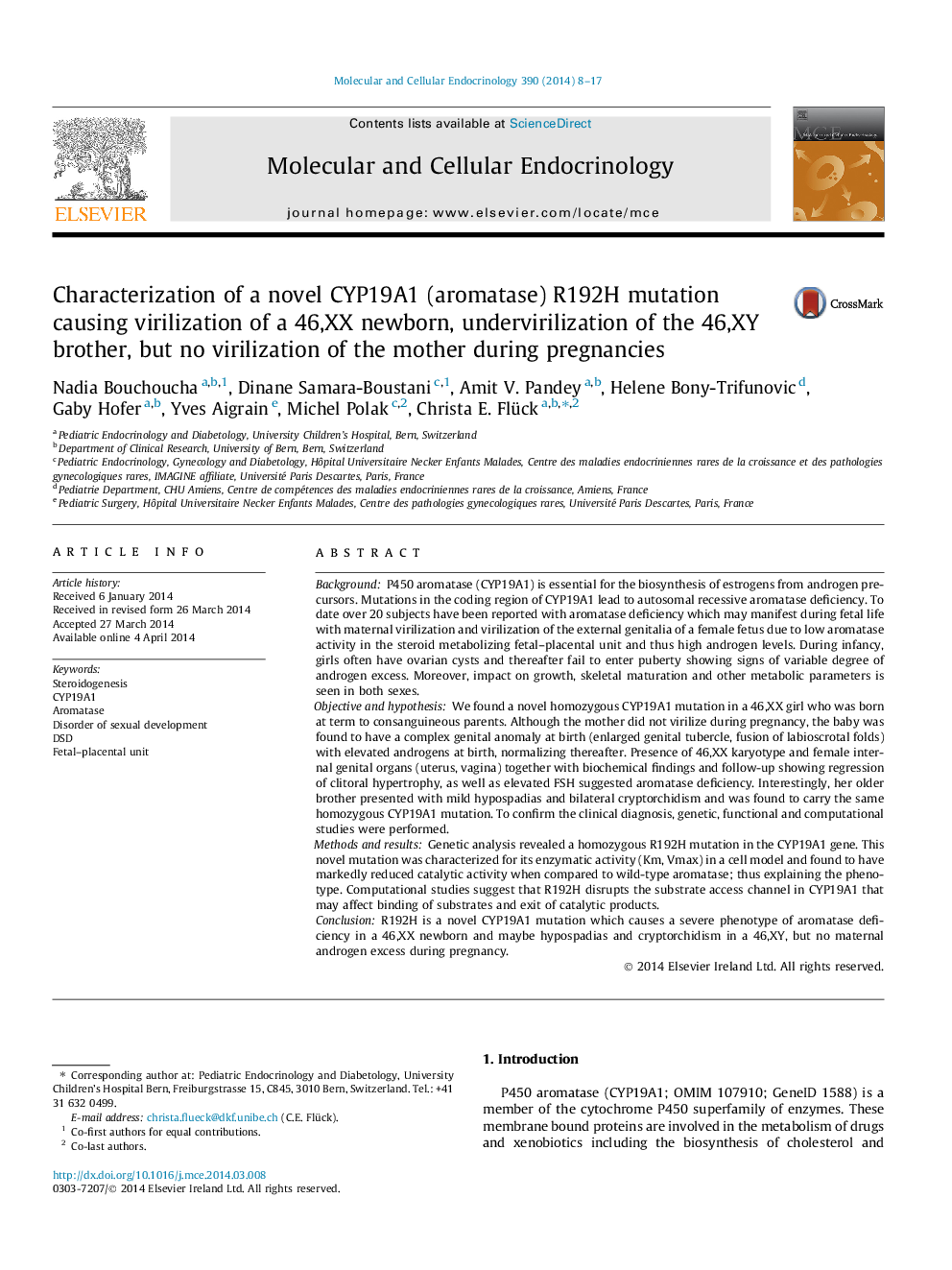| کد مقاله | کد نشریه | سال انتشار | مقاله انگلیسی | نسخه تمام متن |
|---|---|---|---|---|
| 2196029 | 1550888 | 2014 | 10 صفحه PDF | دانلود رایگان |

• Novel CYP19A1 mutation R192H causes 80% reduction in enzyme activity.
• The R192H mutation in CYP19A1 caused 46,XX disorder of sex development.
• There was no maternal virilization during pregnancy.
• Healthy 46,XY brother with R192H had hypospadias and cryptorchidism.
• Computational structure analysis shows R192H disrupts substrate access and binding.
BackgroundP450 aromatase (CYP19A1) is essential for the biosynthesis of estrogens from androgen precursors. Mutations in the coding region of CYP19A1 lead to autosomal recessive aromatase deficiency. To date over 20 subjects have been reported with aromatase deficiency which may manifest during fetal life with maternal virilization and virilization of the external genitalia of a female fetus due to low aromatase activity in the steroid metabolizing fetal–placental unit and thus high androgen levels. During infancy, girls often have ovarian cysts and thereafter fail to enter puberty showing signs of variable degree of androgen excess. Moreover, impact on growth, skeletal maturation and other metabolic parameters is seen in both sexes.Objective and hypothesisWe found a novel homozygous CYP19A1 mutation in a 46,XX girl who was born at term to consanguineous parents. Although the mother did not virilize during pregnancy, the baby was found to have a complex genital anomaly at birth (enlarged genital tubercle, fusion of labioscrotal folds) with elevated androgens at birth, normalizing thereafter. Presence of 46,XX karyotype and female internal genital organs (uterus, vagina) together with biochemical findings and follow-up showing regression of clitoral hypertrophy, as well as elevated FSH suggested aromatase deficiency. Interestingly, her older brother presented with mild hypospadias and bilateral cryptorchidism and was found to carry the same homozygous CYP19A1 mutation. To confirm the clinical diagnosis, genetic, functional and computational studies were performed.Methods and resultsGenetic analysis revealed a homozygous R192H mutation in the CYP19A1 gene. This novel mutation was characterized for its enzymatic activity (Km, Vmax) in a cell model and found to have markedly reduced catalytic activity when compared to wild-type aromatase; thus explaining the phenotype. Computational studies suggest that R192H disrupts the substrate access channel in CYP19A1 that may affect binding of substrates and exit of catalytic products.ConclusionR192H is a novel CYP19A1 mutation which causes a severe phenotype of aromatase deficiency in a 46,XX newborn and maybe hypospadias and cryptorchidism in a 46,XY, but no maternal androgen excess during pregnancy.
Journal: Molecular and Cellular Endocrinology - Volume 390, Issues 1–2, 5 June 2014, Pages 8–17